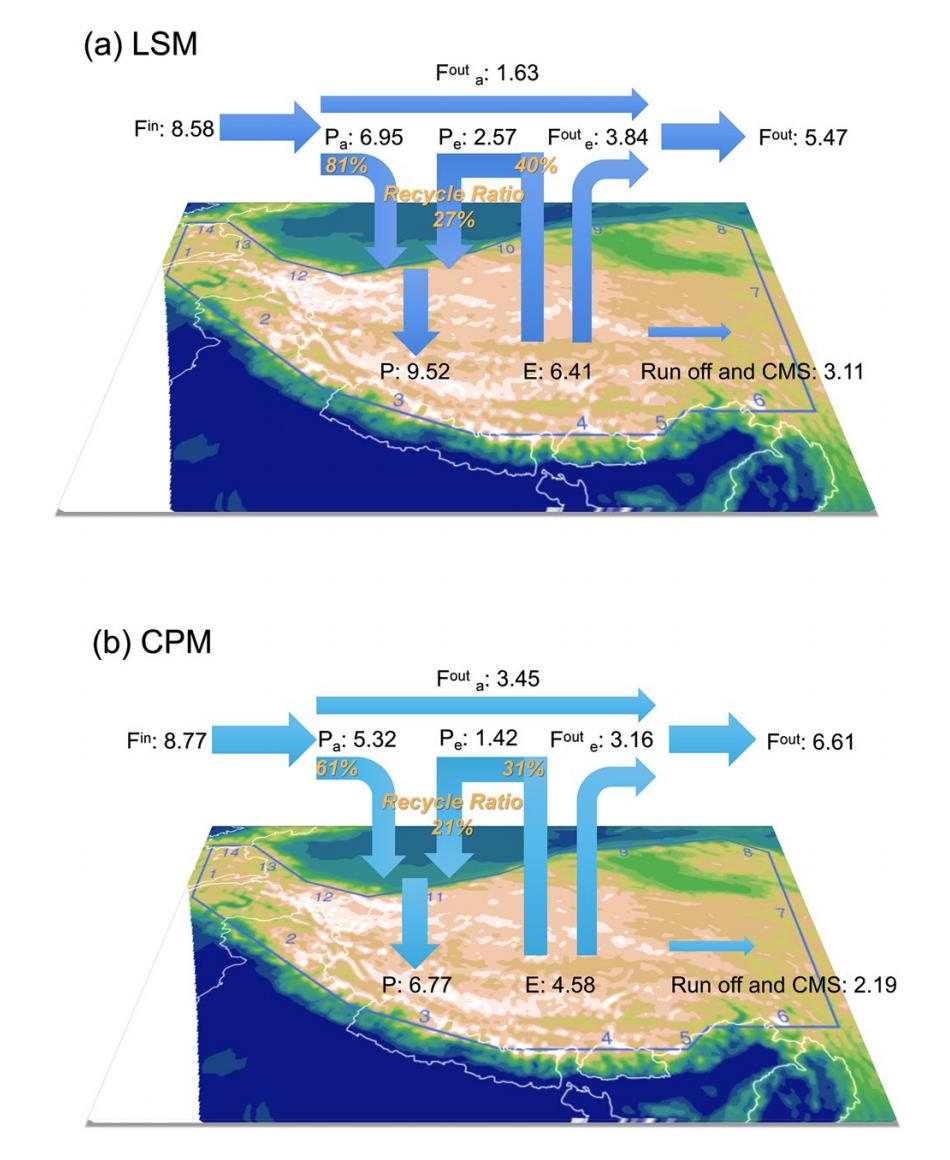Future changes in the precipitation on the Tibetan Plateau (TP) may have a profound influence on the ecosystem and environment of high-altitude East Asia. Despite this, climate modeling faces challenges in accurately simulating precipitation and water cycle on the TP.
One possible route to overcome these challenges is using convection-permitting models (CPMs) to simulate the atmosphere over the TP. Such models explicitly resolved deep convection and may improve simulate precipitation over the TP, according to a study published in
Journal of Geophysical Research: Atmospheres.
The study was conducted by researchers from the Institute of Atmospheric Physics (IAP) of the Chinese Academy of Sciences, Chinese Academy of Meteorological Sciences (CAMS), and the UK Met Office.
Climate models have wet bias in simulating the TP precipitation, which is generally attributed to the overestimation of moisture transport through the southern edges of the TP. "However, from the process-oriented perspective of atmospheric water cycle, we found that the added value of the CPM is dominated by the realistic depiction of the precipitation process and its upscale effect, rather than the reduced northward transport of water vapor," said ZHOU Tianjun, the corresponding author of the study and a senior scientist at IAP.
Using a CPM based on the Met Office's Unified Model, the research group conducted a traditional ("convection-parameterized") simulation (LSM) with the model resolution of 13.2km, and a CPM simulation with the resolution of 4.4km, both focusing on the precipitation over the TP during the summer of 2009.
The results showed the wet bias in the simulated TP precipitation were obviously reduced from 61% in the LSM to 14% in the CPM. They found that this improvement occurred because the CPM converted approximately 25% less of the moisture into precipitation than the LSM.

The schematic diagrams of the water cycle over the TP in LSM and CPM. Unit: 107 kg s-1. (Image by ZHAO Yin)
This improvement in precipitation, in turn improved the simulation of atmospheric circulation. "Because the CPM treats rainfall processes in a completely different way, changes in latent heating give a more realistic simulation of the large-scale circulation over the TP in summer, which plays a key role in the moisture transport over the TP," said ZHAO Yin, first author of the study.
The improved circulation improves the transport of moisture into and out of the TP. Overall, the amount of moisture convergence is reduced, and this is key to the smaller wet bias in the CPM. This sheds light on what causes the precipitation biases in the current generation of global and regional models: they are upscale effects of the latent-heat released by convective storms on the TP. Improving the simulation of these storms is therefore important for obtaining better prediction of future climate change in high-altitude East Asia.
This work was supported by the Second Tibetan Plateau Scientific Expedition and Research program National Natural Science Foundation of China, K.C.Wong Education Foundation and the UK-China Research & Innovation Partnership Fund.





